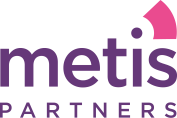Intellectual Property is All About Strategy
It is a similar to a business plan but focused on your Intellectual Property (‘IP’) assets. They include brand, trade secrets, data and know-how and are key operating assets in many businesses, driving growth and underpinning cash flows. Developing an IP strategy ensures that the overall business plan incorporates these key business assets. Businesses that have a robust IP strategy, designed to withstand investor due diligence, often grow faster and are typically more successful in securing lending and investment at higher valuations.
Who needs an IP strategy?
Every management team or executive board who wants a plan to build or improve the competitive moat around the business.
An IP strategy often begins with the development of a new or the refinement of an existing formal IP strategy document (often a ppt deck) that acknowledges, rates and showcases your IP assets, such as patents, brands, software, trade secrets and know-how. It will also summarize how you plan to increase the strength of these assets, fill any gaps in your IP moat and explain how that will help you accelerate the growth of your business and differentiate you from your competitors.
Key activities flowing from this IP strategy include:
- IP improvement – the creation of an action plan of IP asset improvement activities, outlining the key activities, timetables and the anticipated outcomes and positive impact on the business;
- IP policy – the review and refinement of relevant internal IP policies and processes, usually linked to IP creation and protection;
- IP training – internal staff training focused on the recognition, protection and management of IP assets;
- IP asset deployment in joint ventures, partnerships and licensing – these events often create valuable third party validation of the strength of your IP. Its therefore important to both protect and exploit IP assets in these scenarios, whilst seeking to achieve a return on your investment; and
- IP reporting – both internal and external reporting. Typically focused on external IP counsel activities (if any), and internal reports on IP strategy progress to CEO, CFO, CTO, general counsel, and any other designated staff.
Of course the costs of developing the various forms of intellectual property needed in that competitive moat can vary considerably:
- Trade secrets may involve minimal expense to record and protect; whereas
- Patents can cost many tens or even hundreds of thousands of dollars over their lifespans.
Therefore, since many companies have limited budgets for IP asset creation, protection, and acquisition, it is essential that you have a clear and easily understood IP strategy and understand the true costs, risks, and benefits in of that strategy.
Learn more about intellectual properties today! We offer details on all facets of intellectual property including IP valuations, as well as formal intellectual property, informal intellectual property, intellectual property licenses, and so much more.

